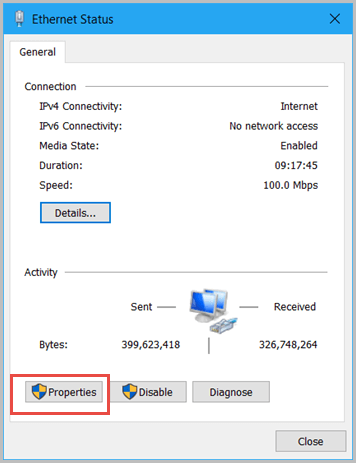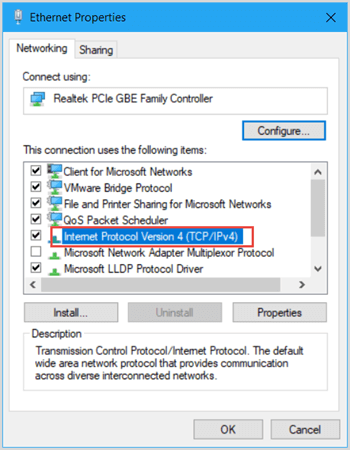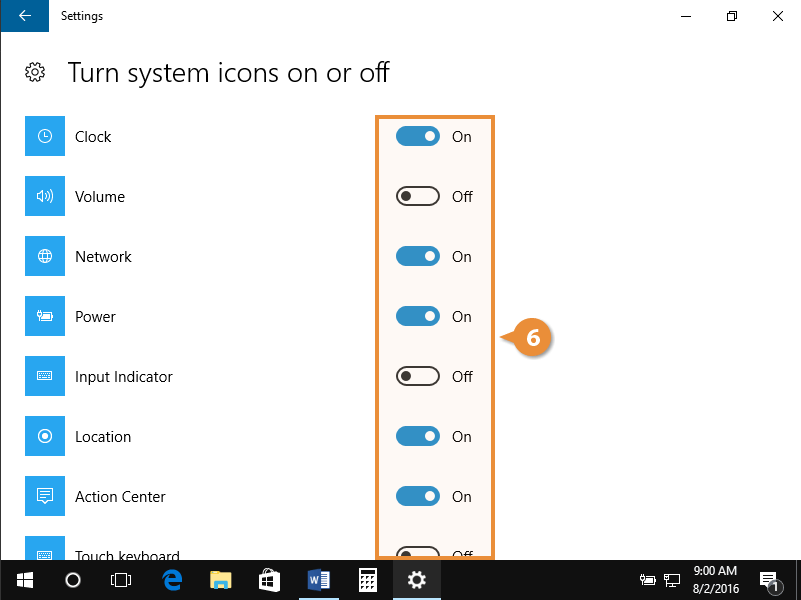
- #WIN 10 ETHERNET STATUS PIN TO TASKBAR HOW TO#
- #WIN 10 ETHERNET STATUS PIN TO TASKBAR UPDATE#
- #WIN 10 ETHERNET STATUS PIN TO TASKBAR ANDROID#
#WIN 10 ETHERNET STATUS PIN TO TASKBAR ANDROID#
Action Center: This is where notifications and warning from apps like Windows Defender, Email, or your smartphone (when you link your Android phone to your PC with Microsoft Launcher) are displayed.

Time and Date: Displays the time and date.ġ0. You can also change sound settings, launch the PC volume mixer and make some other sound related adjustments by right-clicking on the speaker icon.ĩ. Sound and Speaker: If your PC doesn’t come with dedicated volume adjustment keys on the keyboard, you can easily control and adjust your PC volume from the taskbar. Network & Connectivity: The Windows taskbar also come with a shortcut to easily access wired and wireless network connections like WiFI, Ethernet connection, etc.Ĩ. The icon indicates battery charge level as well as the charging status of your PC’s battery - tells if your battery is plugged in, charging, or not charging.ħ. Battery: The battery icon is another element of the Windows taskbar. On Windows 10, Deskbands are minimized as “Hidden icon” represented by an upward-facing arrow at the right-hand side of the taskbar.Ħ. Deskbands: These are minimized functional, long-running programs, such as Windows Defender and Windows Media Player. To pin an app to the taskbar, simply right-click on the app on the desktop and select “Pin to taskbar”.ĥ. You can also customize the quick launch area by pinning (i.e. By default, the taskbar quick launch area does come with some system apps like Microsoft edge, Internet Explorer, File Explorer, Microsoft Store, etc. This region accommodates program and application shortcuts. Quick Launch: The wide space in the middle of the taskbar is the “Quick Launch” area. Like the search bar, the task view button can also be hidden.Ĥ. Clicking the Task View button also allows you create and switch between multiple workspaces. The Task View button displays all open windows on your PC screen and allows you switch between them.

Task View button: This is also on the left-hand side of the taskbar, right next to the search bar. Users can choose to hide the search bar.ģ. You can use it to quickly find files or apps on your PC.

Search Bar: Next to the Start button is the search bar. Start Button: Also the Windows Button, this button is always at the left end of the taskbar and clicking it immediately reveals the PC “Start menu”.Ģ. Some of the elements you’d find on the taskbar of a Windows PC include:ġ. The images below depict what a taskbar might look like on your PC.
#WIN 10 ETHERNET STATUS PIN TO TASKBAR UPDATE#
If you want to remove the update itself, head to Control Panel > Uninstall a program > View installed updates and click on the update that you want to remove.And depending on the version of the operating system your PC runs, the graphical interface and element composition of the taskbar will vary. To disable this feature, right-click on the weather icon, select “Disable”. The simple fix for those running the May 2020 Update or newer is to disable News and Interests feature from the settings. Uninstalling the cumulative update in question gets rid of the taskbar issues, but if you want to keep the update for whatever reason, there appears to be a second workaround involving News and Interests feature.
#WIN 10 ETHERNET STATUS PIN TO TASKBAR HOW TO#
How to fix taskbar issues after KB5003214

The search box is also not appearing on the taskbar for some users, while a few users have flagged display scaling issues, which could be related to the system tray bug. The icons appeared over the clock for a bit then disappeared,” a user explained the problem in the Feedback Hub. “After installing KB5003214, my taskbar (in the bottom right with clock, notification centre, network icon etc) all broke. In other words, folks who are using the latest cumulative preview update with the “News and Interests” feature enabled on the normal desktop are having issues with the system tray which are meant to display background apps and pinned apps.


 0 kommentar(er)
0 kommentar(er)
